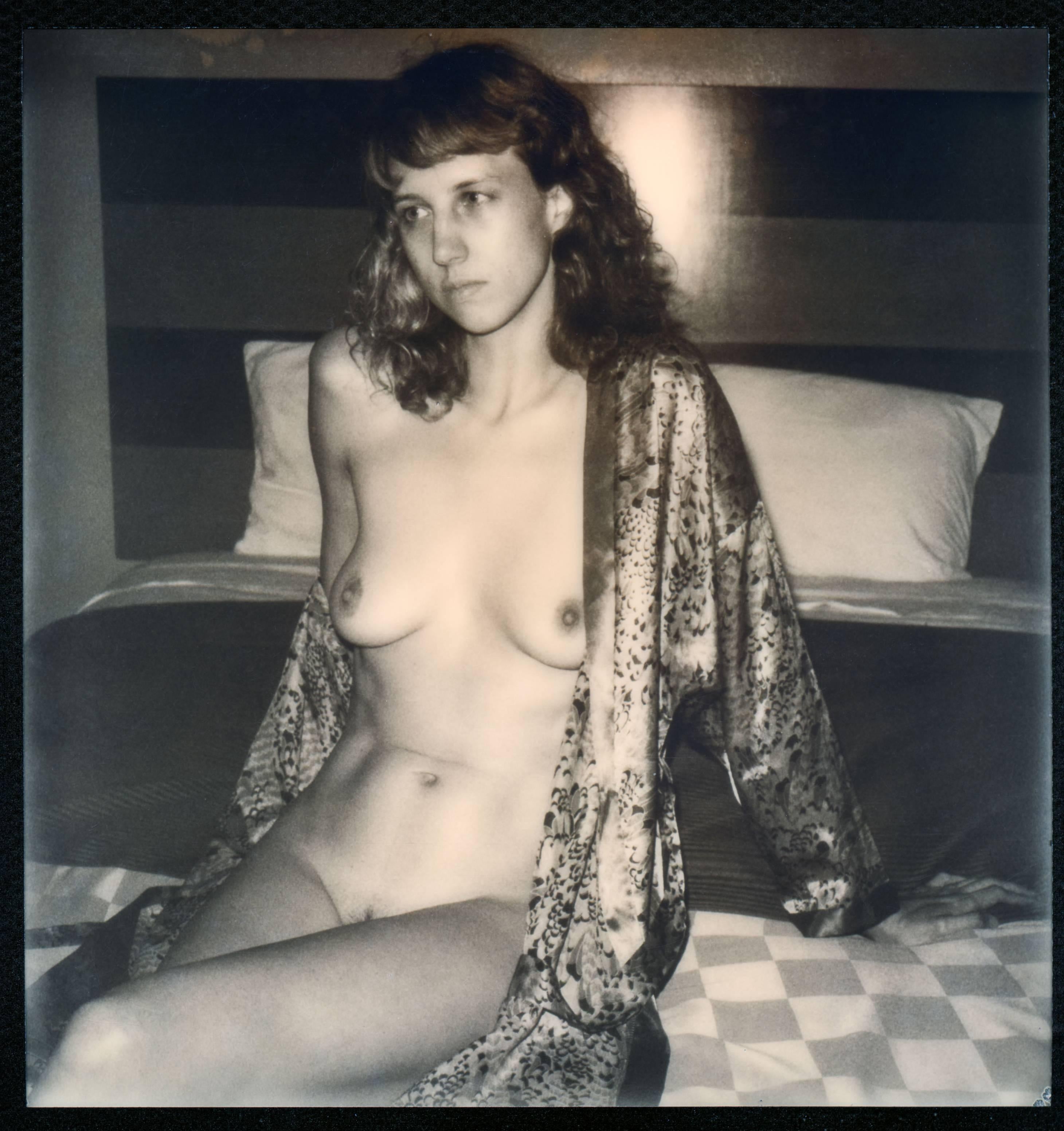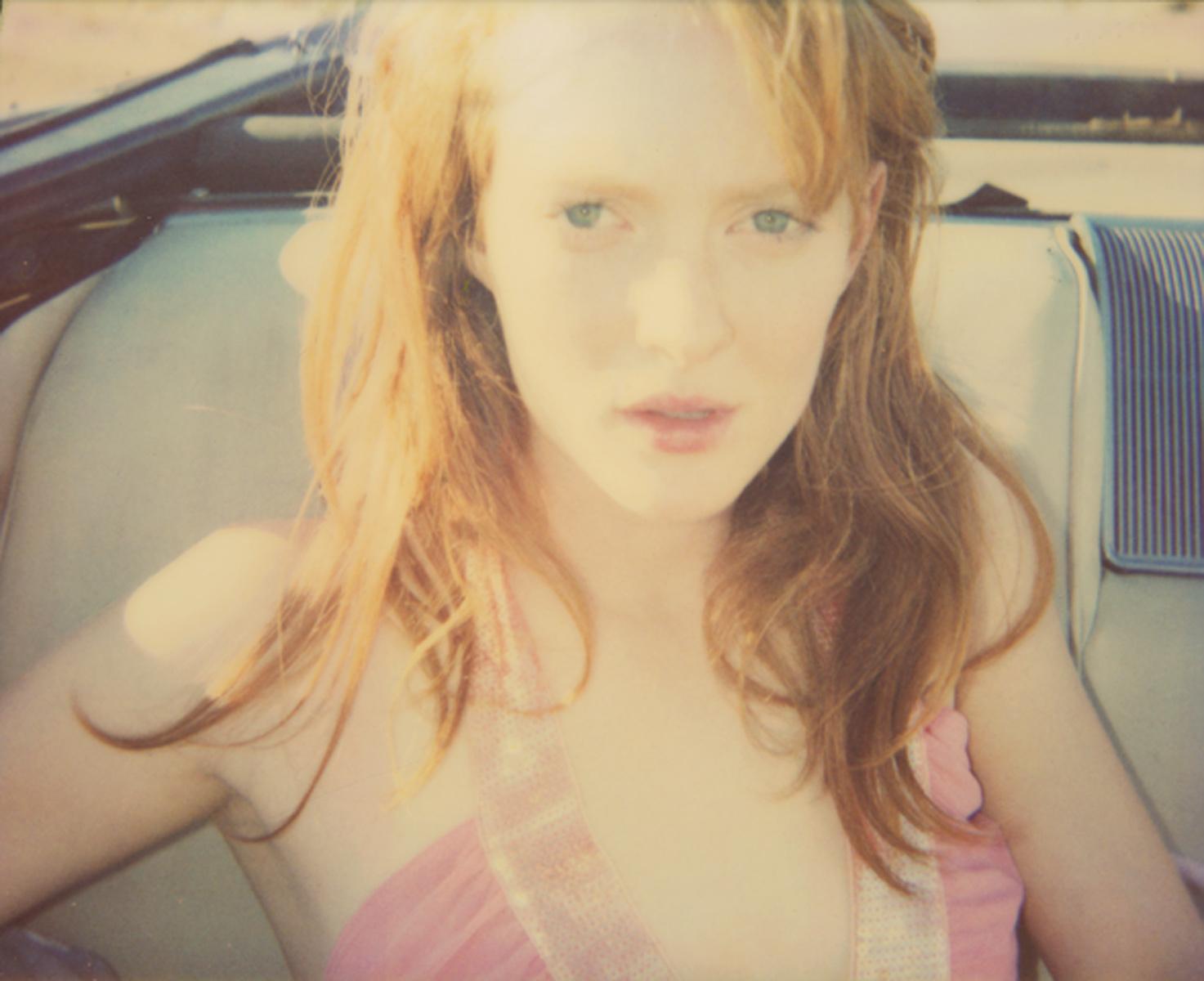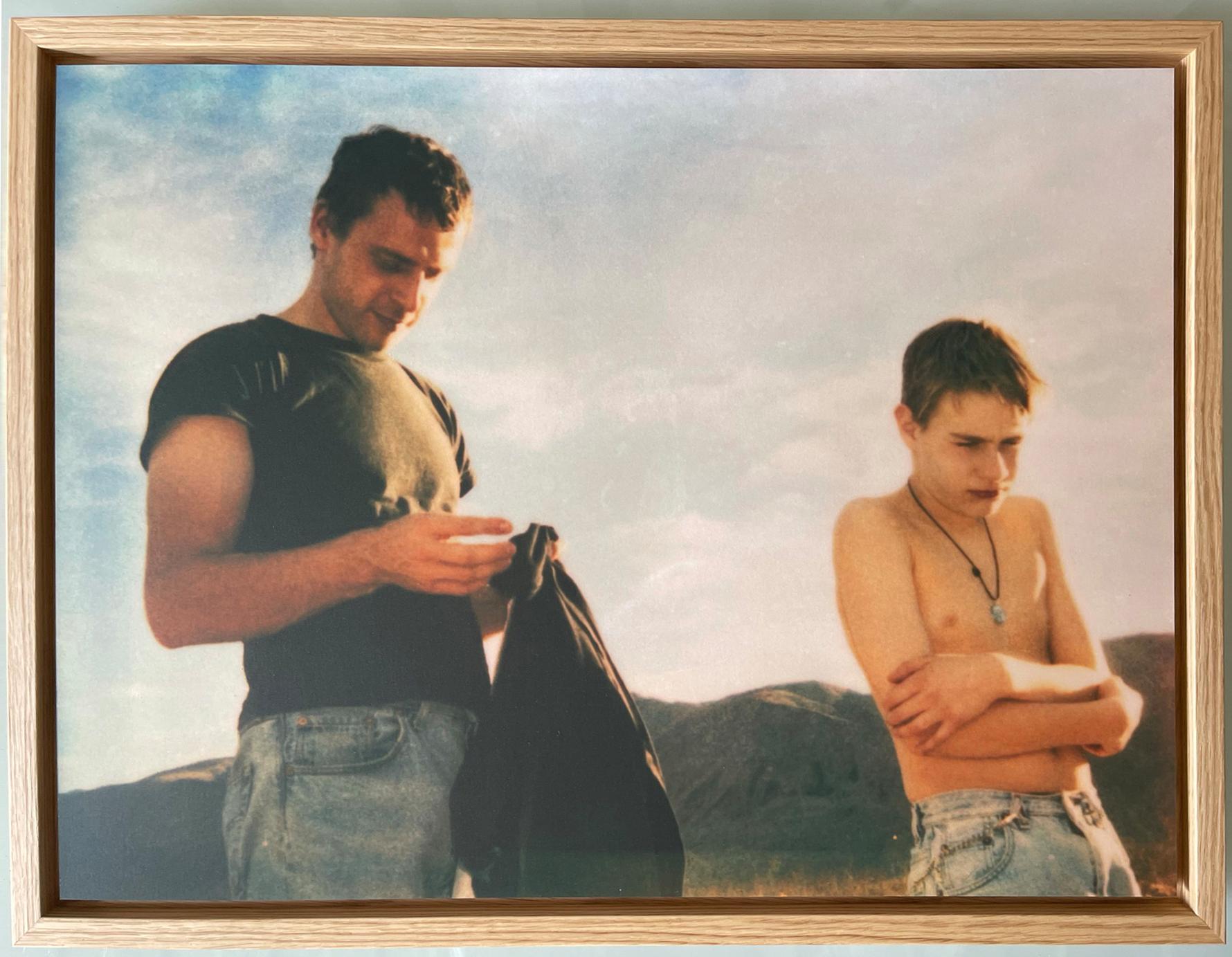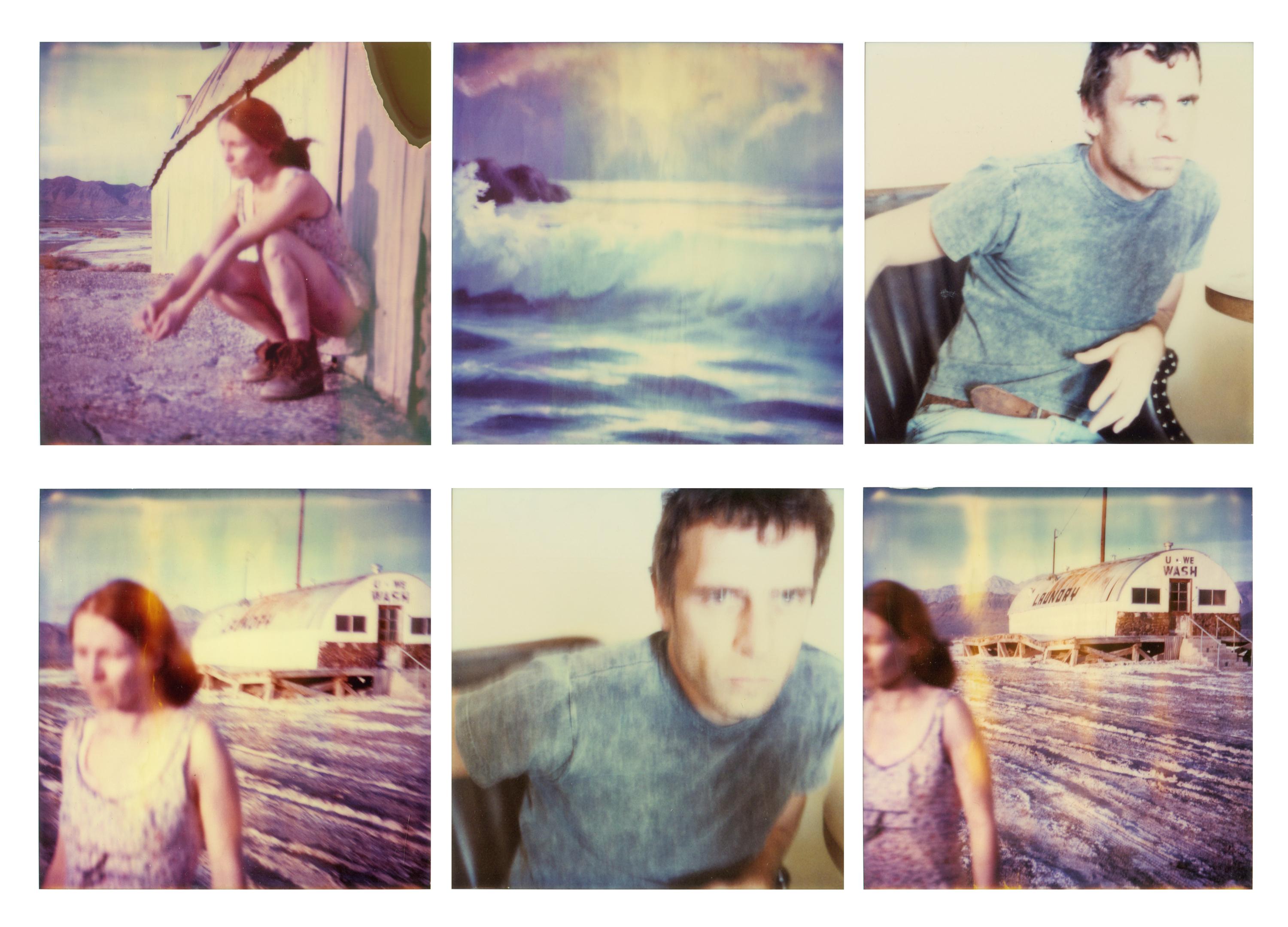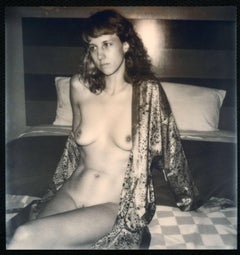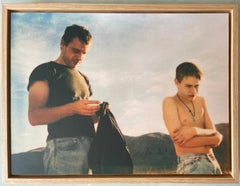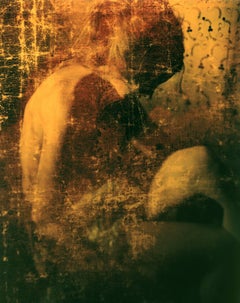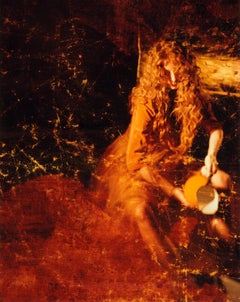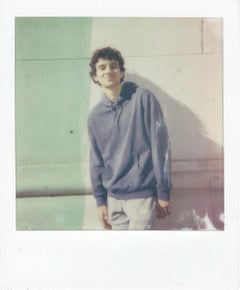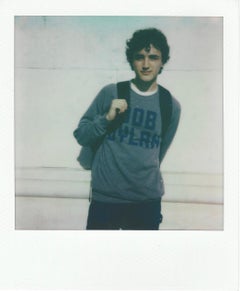Items Similar to Enchanted - Saigon
Want more images or videos?
Request additional images or videos from the seller
1 of 2
Stefanie SchneiderEnchanted - Saigon1999
1999
About the Item
'Enchanted' by Stefanie Schneider
(Saigon) - 1999
20x20cm,
Sold out Edition of 5, Artist Proof 2/2
Archival C-Print based on the Polaroid,
Certificate and signature label
Not mounted.
Stefanie Schneider interviewed by the 'Instant Dreams' movie director.
When did you first decide to work with Polaroids? Why do Polaroids seem to be so well tuned to our (artistic) senses, perception and minds?
I started using expired Polaroid film in 1996. It has the most beautiful quality and encapsulates my vision perfectly. The colors on one hand, but then the magic moment of witnessing the image appear. Time seems to stand still, and the act of watching the image develop can be shared with the people around you. It captures a moment, which becomes the past so instantly that the decay of time is even more apparent; – it gives the image a certain sentimentality. The Polaroid moment is an original every time.
Why use a medium from the past?
For me, analog has always been there in the present. For the new generation, analog is interesting because it's new to them. I understand that people growing up in a digital age will wonder about its usefulness, but it's theirs to recover if they want to. When I first started working with Polaroid, it wasn't the past. It was a partially forgotten medium, but it existed nonetheless. It is mine by choice. There is no substitute for tangible beauty.
Is it imperfect?
The imperfect perfection in a “wabi-sabi” kind of way.
Wabi-sabi (侘寂) represents a comprehensive Japanese world view or aesthetic centered on the acceptance of transience and imperfection. The aesthetic is sometimes described as one of beauty that is "imperfect, impermanent, and incomplete".
"If an object or expression can bring about, within us, a sense of serene melancholy and a spiritual longing, then that object could be said to be wabi-sabi." "Wabi-sabi nurtures all that is authentic by acknowledging three simple realities: nothing lasts, nothing is finished, and nothing is perfect."
Is the Polaroid photograph recognizable or even sometimes cliché?
Absolutely! There's something cliché about the way I'm showing the American Dream. I live it myself, trying to find perfection in an imperfect world. Reaching for the horizon. The dream is broken; the cliché tumbles. There are different ways to involve an audience. You could make movies like Harmony Korine's "Gummo", a masterpiece in my view, which would estrange a large part of the audience. A certain film education is a prerequisite. Or you can start with clichés, the audience then feels safe, which lures them into the depth of your world without them even knowing it or understanding where exactly they are being led to. Appealing to emotions and the sub-conscious. Normal, Change, New Normal.
You continually revisit the landscape of the American West in your work. What draws you back to this scene?
Southern California represents a dream to me. The contrast of Northern Germany, where I grew up, to the endless sunshine of Los Angeles was what first attracted me. The American West is my dream of choice. Wide, open spaces give perspectives that articulate emotions and desires. Isolation feeds feelings of freedom or sometimes the pondering of your past. The High Desert of 29 Palms has very clear and vivid light, which is vital. Expired Polaroid film produces 'imperfections' that I would argue mirrors the decline of the American dream. These so called 'imperfections' illustrate the reality of that dream turning into a nightmare. The disintegration of Western society.
Are you playing with the temporality of the material and the value of the moment itself?
The value of the moment is paramount, for it is that moment that you're trying to transform. All material is temporary, it's relative, and time is forever.
Why does analog film feel more pure and intuitive?
It's tangible and bright and represents a single moment.
The digital moment may stay in the box (the hard drive / camera / computer etc.) forever, never to be touched, put into a photo album, sent in a letter, or hung on a wall. Printing makes it an accomplishment.
The analog world is more selective, creating images of our collective memory.
The digital worldwide clicking destroys this moment. The generation without memories due to information overload and hard drive failures. Photo albums are a thing of the past.
Why does it feel this way?
That's how the human instinct works.
When I was a child, every picture been taken was a special moment. Analog photographic film as well as Super-8 material were expensive treasures. My family's memories were created by choosing certain moments in time. There was an effort behind the picture. The roll of film might wait months inside the camera before it was all used. From there, the film required developing, which took more time, and finally, when the photos were picked up from the shop, the memories were visited again together as a family. Who knew then, how fleeting these times were. Shared memories was a ritual.
What's your philosophy behind the art of Polaroid pictures?
The 'obsolete' is anything but obsolete. Things are not always as they appear, and there are hidden messages. Our memories and our dreams are under-valued. It is there that real learning and understanding begins by opening yourself to different perspectives.
What inspired you to use stop motion cinematography?
My work has always resembled movie stills. I remember the first time I brought a box of Polaroids and slid them onto Susanne Vielmetter's desk (my first gallery). Instantly, it became apparent that there was a story to tell. The stories grew. It was undeniable to me, that the emerging story was where I was destined to go. I've made four short films before my latest feature film, "The Girl behind the White Picket Fence". This film is 60 minutes long with over 4000 edited Polaroids. It's important to remember that our sub-conscious fills in the blanks, the parts missing from the story allow a deeper and more personal experience for the viewer. That is, if you surrender yourself and trust me as the director to lead you somewhere you might not have been before.
Why do you think it is important to own art?
We have art in order not to die of the truth.
Nietzsche
A German view of the American West
The works of Stefanie Schneider evoke Ed Ruscha's obsession with the American experience, the richness of Georgia O'Keefe's deserts and the loneliness of Edward Hopper's haunting paintings. So how exactly did this German photographer become one of the most important artists of the American narrative of the 20th and 21st century?
This theme of preservation and deterioration is a core part of Schneider's oeuvre. In an interview in October 2014 with Artnet, the artist explained how her own experiences of pain and loss inspire her. ''My work resembles my life: Love, lost and unrequited, leaves its mark in our lives as a senseless pain that has no place in the present.'' The first to use expired Polaroid film as their medium and in doing so inspired the resurrection of Polaroid film itself. Saving the last production line in the world from it's impending destruction in 2008.
Schneider's subjects are often featured in apocalyptic settings: desert planes, trailer parks, oilfields, run-down motels and empty beaches, alone, or if not, not connected with one another. ''It is the tangible experience of ''absence'' that has inspired my work,'' explained Schneider.
(Barnebys UK, May 3, 2017
Stefanie Schneider received her MFA in Communication Design at the Folkwang Schule Essen, Germany. Her work has been shown at the Museum for Photography, Braunschweig, Museum für Kommunikation, Berlin, the Institut für Neue Medien, Frankfurt, the Nassauischer Kunstverein, Wiesbaden, Kunstverein Bielefeld, Museum für Moderne Kunst Passau, Les Rencontres d'Arles, Foto -Triennale Esslingen, Bombay Beach Biennale 2018.
- Creator:Stefanie Schneider (1968, German)
- Creation Year:1999
- Dimensions:Height: 7.88 in (20 cm)Width: 7.88 in (20 cm)Depth: 0.04 in (1 mm)
- Medium:
- Movement & Style:
- Period:
- Condition:
- Gallery Location:Morongo Valley, CA
- Reference Number:Seller: STSCH #0271stDibs: LU652315480982
Stefanie Schneider
Stefanie Schneider received her MFA in Communication Design at the Folkwang Schule Essen, Germany. Her work has been shown at the Museum for Photography, Braunschweig, Museum für Kommunikation, Berlin, the Institut für Neue Medien, Frankfurt, the Nassauischer Kunstverein, Wiesbaden, Kunstverein Bielefeld, Museum für Moderne Kunst Passau, Les Rencontres d'Arles, Foto -Triennale Esslingen., Bombay Beach Biennale 2018, 2019.
About the Seller
4.9
Platinum Seller
Premium sellers with a 4.7+ rating and 24-hour response times
Established in 1996
1stDibs seller since 2017
1,019 sales on 1stDibs
Typical response time: 2 hours
- ShippingRetrieving quote...Shipping from: Morongo Valley, CA
- Return Policy
Authenticity Guarantee
In the unlikely event there’s an issue with an item’s authenticity, contact us within 1 year for a full refund. DetailsMoney-Back Guarantee
If your item is not as described, is damaged in transit, or does not arrive, contact us within 7 days for a full refund. Details24-Hour Cancellation
You have a 24-hour grace period in which to reconsider your purchase, with no questions asked.Vetted Professional Sellers
Our world-class sellers must adhere to strict standards for service and quality, maintaining the integrity of our listings.Price-Match Guarantee
If you find that a seller listed the same item for a lower price elsewhere, we’ll match it.Trusted Global Delivery
Our best-in-class carrier network provides specialized shipping options worldwide, including custom delivery.More From This Seller
View AllDay and Night
By Kirsten Thys van den Audenaerde
Located in Morongo Valley, CA
Day and Night - 2017
Edition of 7 plus 2 Artist Proofs.
48x46cm
Archival C-print, based on a Polaroid.
Signed on the back and with certificate.
Artist...
Category
2010s Contemporary Nude Photography
Materials
Photographic Paper, Archival Paper, C Print, Color, Polaroid
The Trick Is To Keep Breathing - Polaroid, Contemporary, Environmental, Future
By Julia Beyer
Located in Morongo Valley, CA
'The Trick is to keep Breathing’, 2017,
10x20 inches, edition 1/10, Metal Print, high gloss, based on a Mixed Media Polaroid diptych. Signature label with Certificate.
Exhibition:...
Category
2010s Contemporary Color Photography
Materials
Photographic Paper, C Print, Color, Polaroid
Mermaid's Daughter (Till Death do us Part)
By Stefanie Schneider
Located in Morongo Valley, CA
Mermaid's Daughter (Till Death do us Part) - 2005,
70x85cm,
Edition of 10.
Archival C-Print, based on the original Polaroid.
Certificate and Signature label.
Artist Inventory ...
Category
Early 2000s Contemporary Color Photography
Materials
Archival Paper, Photographic Paper, C Print, Color, Polaroid
D. and Felix - Contemporary, 21st Century, Polaroid, Figurative Photography
By Stefanie Schneider
Located in Morongo Valley, CA
D. and Felix (Stranger than Paradise) - 1997
Edition of 2/30.
Image size 16 x 21.6 inch,
External dimensions: 17.7 x 23.3 inch.
Archival C-Print, based on the Polaroid.
Mounted...
Category
1990s Contemporary Portrait Photography
Materials
Photographic Paper, C Print, Polaroid, Wood, Archival Paper
Alaska (Stranger than Paradise) analog - 6 pieces
By Stefanie Schneider
Located in Morongo Valley, CA
Alaska (Stranger than Paradise) - 2002
Edition of 3/5,
105x150cm installed, 48x46 cm each.
6 Analog C-Prints, hand printed by the artist and based original 6 Polaroids.
Signature...
Category
Early 2000s Contemporary Color Photography
Materials
Archival Paper, Photographic Paper, C Print, Color, Polaroid
Untitled (Oilfields) - Contemporary, Polaroid, Photograph, Analog, Enlargement
By Stefanie Schneider
Located in Morongo Valley, CA
Untitled (Oilfields) - 2004
60x60cm,
Edition 2/10,
analog C-Print, hand-printed by the artist,
based on a Polaroid.
Certificate and Signature label,
artist Inventory No. 1220.0...
Category
Early 2000s Contemporary Portrait Photography
Materials
Archival Paper, Photographic Paper, C Print, Color, Polaroid
You May Also Like
Elena Seated
By Jack Perno
Located in Chicago, IL
Archival Pigment Print
Edition of 25
Print size: 38 H x 30 W inches
Frame size: 54 H x 44 W inches
This piece is a digital reproduction of an original 8 x 10" polaroid that was man...
Category
21st Century and Contemporary Contemporary Color Photography
Materials
Inkjet, Polaroid, Archival Ink, Archival Paper
Price Upon Request
Elena Washing
By Jack Perno
Located in Chicago, IL
Archival Pigment Print
Edition of 25
Print size: 38 H x 30 W inches
Frame size: 54 H x 44 W inches
This piece is a digital reproduction of an original 8 x 10" polaroid that was man...
Category
21st Century and Contemporary Contemporary Color Photography
Materials
Archival Ink, Archival Paper, Inkjet, Polaroid
Price Upon Request
Call Me Timothée #29
Located in New York, NY
Call Me Timothée #29
10/27/2024
Polaroid (Unique)
Signed, titled, and dated, verso
4.25 x 3.5 inches
Category
2010s Contemporary Photography
Materials
Polaroid
Call Me Timothée #5
Located in New York, NY
Call Me Timothée #5
10/27/2024
Polaroid (Unique)
Signed, titled, and dated, verso
4.25 x 3.5 inches
Category
2010s Contemporary Photography
Materials
Polaroid
Red, December, Unique Polaroid Self Portrait by Dietmar Busse
By Dietmar Busse
Located in New York, NY
Red, December, Unique Polaroid Self Portrait by Dietmar Busse.
Red, December
2001
Signed and numbered in black ink, verso
Polaroid (Unique)
5 x 4 inches, image
Contact gallery...
Category
Early 2000s Contemporary Photography
Materials
Polaroid
Untitled Polaroid 23, Unique Self Portrait Photograph by Dietmar Busse
By Dietmar Busse
Located in New York, NY
Untitled Polaroid 23, Unique Self Portrait Photograph by Dietmar Busse.
2001
Signed and dated in black ink, verso
Polaroid (Unique)
5 x 4 inches, image
Contact gallery for price.
Category
Early 2000s Contemporary Photography
Materials
Polaroid
Recently Viewed
View AllMore Ways To Browse
Vintage Inspired Watch
Vintage Dior Watch
20th Century Georgian Mirror
Vintage Tell Watch
Vintage 3 Way Mirror
Design Within Reach Desk
Space Saving Desk
Vintage Computer Desk
Vintage Bombay Desk
Fritz Behn
Fritz Scholder Lithograph
Galerie Rive Gauche
George Rhodes
George Soper
George Washington Clock
Giraffe Etching
Giraffe Lithograph
Glass Fire Extinguisher
